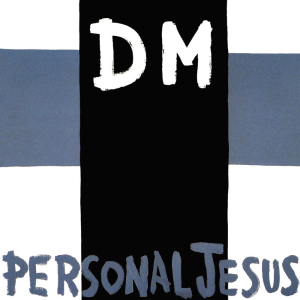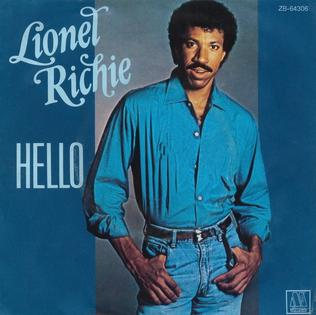 Some covers feel like tributes, but others feel like reinventions. Joan Jett’s version of “Crimson and Clover,” released in 1982 on her breakthrough album I Love Rock ’n Roll, is one of those rare transformations that fully reimagines a classic. Originally recorded by Tommy James and the Shondells in 1968, the song was a velvet-soft swirl of psychedelia, romance, and dreamy repetition. But when Jett took hold of it nearly fifteen years later, she didn’t just update it—she reshaped it in her own image. With grit, distortion, and unapologetic attitude, she turned a flower-power slow-burn into an electric confession pulsing with desire and edge.
Some covers feel like tributes, but others feel like reinventions. Joan Jett’s version of “Crimson and Clover,” released in 1982 on her breakthrough album I Love Rock ’n Roll, is one of those rare transformations that fully reimagines a classic. Originally recorded by Tommy James and the Shondells in 1968, the song was a velvet-soft swirl of psychedelia, romance, and dreamy repetition. But when Jett took hold of it nearly fifteen years later, she didn’t just update it—she reshaped it in her own image. With grit, distortion, and unapologetic attitude, she turned a flower-power slow-burn into an electric confession pulsing with desire and edge.
Part of what makes Jett’s version so compelling is how it embodies the cultural shift between the 1960s and the early 1980s. The late sixties were soaked in psychedelic innocence, an era of sonic experimentation and wide-eyed wonder. By the time Jett released her version, rock music had grown sharper, fiercer, and more self-aware. Joan Jett herself was the definition of defiance—a woman who carved out space in a male-dominated industry through sheer force of will. Her “Crimson and Clover” reflects that boldness. It honors the song’s romantic origins while giving it a raw, modern pulse that spoke to a generation ready for women to own desire as loudly as men. The result is a cover so enduring and definitive that many younger listeners associate the song more with Jett than with its original creators.
Reinventing a Psychedelic Classic Through Punk-Driven Rock
Joan Jett didn’t approach “Crimson and Clover” as a delicate artifact. She approached it as a musician with a specific style—hard, unfiltered, and instinctive. The original’s soft tremolo guitars and dreamy vocals are replaced with thick, crunchy distortion and Jett’s unmistakably husky voice. She doesn’t whisper. She doesn’t float. She leans in. Every word sounds intentional, grounded, and alive.
Where the Tommy James version feels airy and swirling, Jett’s take feels like a warm, humming electric amplifier pressed against your chest. It trades psychedelia for immediacy. That tension between devotion and drive is what makes the cover feel new. Jett’s delivery isn’t shy; it’s fierce and smoldering. The emphasis on emotion is still there, but she channels it through rock grit rather than psychedelic haze.
Her arrangement also showcases the strengths of The Blackhearts. The rhythm section locks into a slow but powerful groove, giving the song weight and muscle. The guitars, with their thick layers of distortion, create an atmosphere that’s less dreamy and more hypnotic. Jett keeps the signature tremolo effect on her voice during the title phrase, but even that comes across more like a deliberate stylistic choice—an echo of the past rather than an attempt to recreate it.
A Vocal Delivery That Redefines the Song’s Meaning
Joan Jett doesn’t sing “Crimson and Clover” so much as inhabit it. Her voice, raspy and intimate, adds a new emotional angle to the lyrics. Tommy James delivered the original with gentle yearning. Jett sings it like a confession she’s fully willing to own. She brings a kind of confident sensuality—a sense that she isn’t asking for permission to feel what she feels.
This change in vocal tone shifts the song’s emotional landscape. The original’s sweetness becomes something more direct, more physical. In 1982, this made the cover bold and refreshing. Women vocalists had of course explored desire in music before, but Jett’s punk-rock framing made it feel rebellious. It wasn’t polished. It wasn’t softened. It was raw.
The tremolo effect on her vocals, especially during the repeated “Crimson and clover… over and over,” is iconic. It mirrors the original’s hypnotic phrasing but adds a grittier texture. This moment bridges the two eras—1960s psychedelic shimmer meets 1980s rock crunch. It’s one of the most memorable hooks in her entire catalog.
The Power of Interpretation and Identity
One of the reasons Joan Jett’s version stands out is that it feels absolutely true to her persona. It doesn’t sound like an artist stepping outside her style; it sounds like a perfect match for her musical identity. Jett built her early career on covers—her album I Love Rock ’n Roll includes several—but she always approached them from the perspective of ownership, not replication.
“Crimson and Clover” gave her a chance to showcase vulnerability without sacrificing the toughness that defined her. The emotional honesty in the track is very real, but it’s wrapped in the armor of her sound—distorted guitars, steady beats, and vocals that refuse to waver.
Another important aspect is the fluidity of perspective. Jett kept the original pronouns, singing “I think I could love her.” In 1982, this was significant. It introduced ambiguity into the mainstream rock world—a world that rarely acknowledged the full spectrum of sexual identity. What Jett did so effectively was treat it as unremarkable. It wasn’t a political statement; it was a song sung the way she wanted to sing it.
Because of that, her version gained a layered cultural resonance. For LGBTQ listeners, it was a rare moment of casual, unforced representation in rock music. For others, it simply sounded like Joan Jett doing what she always did—playing the song as herself.
Musical Techniques That Give the Cover Its Edge
What makes Jett’s “Crimson and Clover” so distinctive isn’t just the vocal performance—it’s the production and arrangement decisions that create its mood.
1. Thick guitar distortion
Instead of relying on psychedelic shimmer, Jett leans into a deep, warm distortion that fills every corner of the mix. The guitars don’t just accompany the vocals—they create the emotional temperature of the track.
2. Slow, steady tempo
She preserves the languid pacing of the original, but the heavy instrumentation makes the slowness feel more commanding, more deliberate.
3. The tremolo effect
A direct nod to the 1968 version, but transformed through 1980s production, making it sharper and more stylized.
4. A heavier, more grounded rhythm section
The bass and drums reinforce the song’s emotional gravity. Instead of floating upward, the cover sinks in—drawing the listener into its atmosphere.
5. A climactic guitar solo
Jett’s solo is raw and expressive, adding a new layer of intensity and giving the song a signature rock moment absent from the original.
These choices highlight Joan Jett’s strengths not only as a performer but as someone who understands how to make a song hers without losing its essence.
Cultural Resonance and Why the Cover Endures
Joan Jett’s “Crimson and Clover” is beloved because it bridges eras while feeling timeless. It connects 1968’s dreamy pop sensibility with 1982’s hard-edged rock—a blend that few artists have pulled off with such ease. Because of that, the song resonates across generations.
Her version is also an important part of her artistic legacy. Coming off the massive success of “I Love Rock ’n Roll,” she could have played it safe. Instead, she took a song that was iconic in its own right and reimagined it boldly. This choice solidified her reputation not just as a rock star, but as a curator of songs—someone who could identify, elevate, and transform great material.
Fans also gravitate to the emotional honesty in her performance. Even with all the distortion and grit, the track feels personal. It captures a moment of romantic intensity, but filtered through Jett’s aesthetic, it becomes stronger, more mature, more self-defined.
Conclusion: A Cover That Stands Shoulder-to-Shoulder with the Original
Joan Jett’s 1982 version of “Crimson and Clover” is a masterclass in musical reinvention. Instead of replicating the softness of Tommy James and the Shondells’ original, she infused it with power, sensuality, and rock attitude. The contrast between dreamy melody and gritty instrumentation gives the song new life and makes it feel as fresh today as it did in the early 1980s.
It remains one of the most successful examples of how a great song can evolve through the vision of a bold artist. Jett’s take isn’t merely a cover—it’s a second identity for the track, one that stands so firmly on its own that it has become part of rock history.
Crimson and clover, over and over—and always unmistakably Joan Jett.


